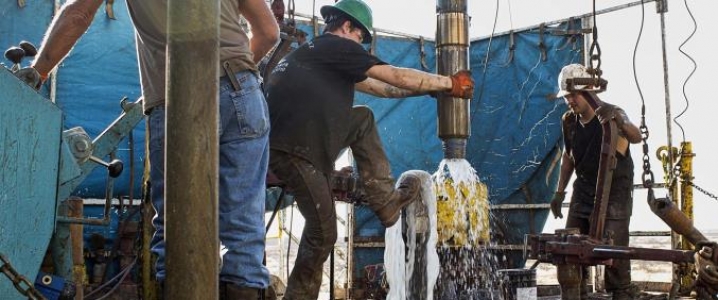Energy players operating in the Permian Basin could soon find that lenders are more willing to loan them cash, as the recent oil rally breathes new optimism into an industry that took a beating in recent years.
The borrowing bases for companies in the hot-spot basin could be increased by as much as 40-percent, according to James Spicer, analyst at Wells Fargo & Co., based in part on projections for a 40 percent increase in production for 2018.
“The Permian Basin is the most prolific basin in the U.S. right now,” Spicer told BloombergMarkets in an interview.
Lenders meet with energy companies twice a year to evaluate reserves, which is then used together with price projections to determine the collateral for the loans.
The price of a WTI barrel today stands above $60, which compares to a sub-$35 barrel low back in January 2016—a price level that caused lenders to tighten the purse strings, forcing producers in some cases into bankruptcy.
Energy companies operating in other basins may not find such generosity, because breakevens in other basins are not as attractive. Parts of the Permian Basin offer breakevens as low as $25 per barrel, but other basins cost as much as $40 per barrel to produce, according to a report from the Federal Reserve Bank of Dallas at the end of March. The result is lower collateral, and therefore smaller loans.
While the Permian will have access to more cash this go around, others, too, will likely find it easier to borrow in this new price environment, including “extreme fossil fuel projects”—those in the Arctic, ultra-deepwater, LNG, coal mining and coal-fired electricity, according to OilPrice’s Nick Cunningham. The world’s largest banks, according to the report, Banking on Climate Change 2018, increased its lending for these extreme projects by 11 percent to $116 billion in 2017.
By Julianne Geiger for Oilprice.com
More Top Reads From Oilprice.com:
- Permian Bottleneck Could Impact Global Oil Markets
- Tanzania’s $344M Natural Gas Plant Is A Game Changer
- The Trump “Twitter Effect” On Oil Prices



















The shale oil industry has not been profitable since the shale oil revolution ten years ago. It would not have survived so far without a huge line of credit offered it by Wall Street and other finance companies.
Logic dictates that US shale oil producers should concentrate on making profit for their shareholders rather than overproducing. However, they find themselves in a vicious circle. They need to continue production even at loss just to get loans to keep them afloat and without production they can’t pay outstanding debts which have been on the rise far above the $200 bn extended to them a few years ago. They work on the principle of “robbing Peter to pay Paul”. So more lines of credit means digging themselves deeper into a hole.
Dr Mamdouh G Salameh
International Oil Economist
Visiting Professor of Energy Economics at ESCP Europe Business School, London